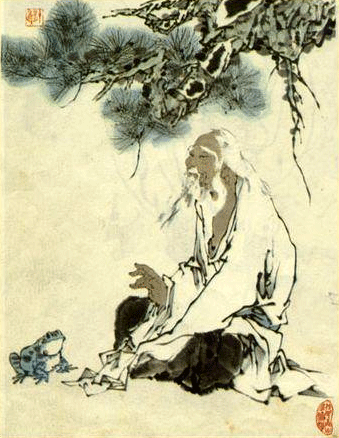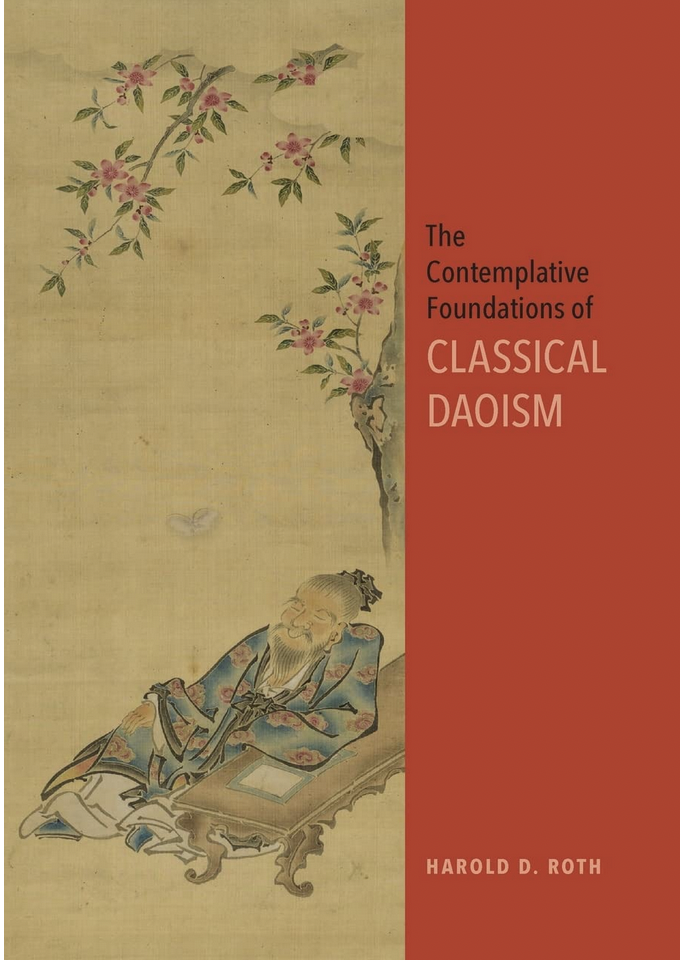
“To ‘discriminate between alternatives’ is to fail to see something.”
(Zhuangzi – translated by C T Graham)
“By direct experience of embodiment of the Way, it is possible to break free of relativistic truths and experience a mode of cognition that can, without hesitation or limit, respond to whatever realities are present in any situation. Zhuangzi conceives of this mode of experience as an illumined cognition based in a consciousness centered in the Way. Such a consciousness is utterly without bias and able to fluidly and spontaneously respond to all the viewpoints and limited visions of reality that it encounters. This ‘illumined’ mode of cognition is so freed from bias that it has no subjective preferences” (Harold D Roth).
In chapter 22 of the Zhuangzi, Lao Dan [Laozi] tells Confucius: “The Sage neither misses the occasion when it is present, nor clings to it when it is past. He responds to it by attuning himself, that’s the Power; he responds to it by matching with it, that’s the Way. From this course the emperors arose and kings began … “ In The Contemplative Foundations of Classical Daoism, Harold Roth comments: “This is the epitome of the flowing consciousness that is advocated throughout the text; it is literally cognitive attunement.”
“Cognitive attunement,” Roth says, is “well captured” in chapter 4’s famous passage on the “fasting of the mind,” where one reads (in Victor Mair’s translation): “‘Maintaining the unity of your will’ … ‘listen not with your ears but with your mind. Listen not with your mind but with your breath. The ears are limited to listening, the mind is limited to tallying. The primal breath, however, awaits things emptily. It is only through the Way that one can gather emptiness, and emptiness is the fasting of the mind’.” [I use Roth’s translation for the end of the quote] “It is easy to stop walking; but much more difficult to walk without touching the ground (wu xing di). ‘To walk without touching the ground’ is Zhuangzi’s metaphor for living in the world without the support of a fixed and attached self-identity. This is living in cognitive attunement to the impulses of the Way as one engages in daily living.”
“That’s it” and “that’s not” – “shi” and “fei”
Roth credits C T Graham with having made “an important breakthrough in translating and understanding the ‘Qi wu lun‘ [Essay on seeing things as equal] when he identified a number of key technical terms also found in the Mohist Canons.” Among those are “the contrasting demonstratives shi and fei, which he renders as ‘that’s it’ and ‘that’s not’ and for the Mohists were judgments rendered about the truth or falseness of propositions about knowledge and the contrasting pronouns shi and bi, which he renders as ‘It’ and ‘Other’. Both pairs are used in the text to represent the conflicting intellectual positions of the various philosophers.” So we read, in his translation of the ‘Qi wu lun’: And so we have the ‘that’s it’, ‘that’s not’ of Confucians and Mohists, by which what is it for one of them for the other is not, what is not for one of them for the other is“ (2/26; Graham C T: Inner Chapters 52).
Two modes of consciousness: “weishi” and “yinshi”
Roth explains: “In a more general sense, shi and fei also stand for basic positions or standpoints that individuals take in the world … In this light, Zhuangzi differentiates between two modes of adherence to such viewpoints that are symbolized in the text as weishi (the ‘that’s it’ which deems, or the contrived ‘that’s it’) and yinshi (the ‘that’s it’ which goes by circumstance, or the adaptive ‘that’s it’). In the former mode, one rigidly applies a preestablished way of looking at the world to every situation in which one finds oneself; in the latter mode, one lets the unique circumstances of the situation determine one’s understanding and approach to it. The former involves a rigid attachment to oneself and one’s intellectual commitments; the latter involves a complete freedom from such an attachment, a freedom to act spontaneously as the situation demands. From the psychological perspective, each represents a distinct mode of consciousness containing its own distinctive mode of knowing.”
The “three every morning” story of the monkey keeper
The contrast between these two modes is illustrated in the famous “three every morning” passage of chapter 2 – “Qi wu lun” “A monkey keeper handing out nuts said, ‘Three every morning and four every evening’. The monkeys were all in a rage. ‘All right’, he said, ‘four every morning and three every evening’. The monkeys were all delighted. Without anything being missed out either in name or in substance, their pleasure and anger were put to use; his too was the ‘that’s it’ which goes by circumstance. This is why the sage smoothes things out with his ‘that’s it, that’s not’, and stays at the point of rest on the potter’s wheel of Heaven” (2/38-40; Graham C T Inner Chapters, 54).
Roth continues: “The monkeys are attached to one fixed way of seeing the underlying reality of the seven nuts: the keeper is not. They symbolize the weishi mode, a mode … characteristic … of the Confucians and Mohists, [which] illumined an It that they preferred without the Other being illuminated … and ‘so the end of it all was the darkness of chop logic’ (2/45 Graham CT Inner Chapters 55). It is said that the sage despises the weishi mode and uses instead the “yinshi mode of consciousness that adapts spontaneously to the situation, an “illumined” consciousness that exhibits an intuitive knowledge that knows how to act without even knowing that it is acting. That is, the sage acts without self-consciousness and without being governed by any directing principle. His consciousness knows spontaneously how to respond because it is not confined to any particular perspective.”
Abandoning a fixed viewpoint is abandoning attachment to the self
Roth says that “Zhuangzi makes it clear that abandoning a fixed viewpoint is concomitant with abandoning attachment to the self. For example, he seems to quote and largely approve of the saying ‘Without an Other, there is no Self; without Self, no choosing one thing rather than another. That is, if you lose the distinction between self and other, then you lose the self and, with it, any bias toward choosing one thing rather than another … No thing is not ‘other’; nothing is not ‘it’. If you treat yourself too as ‘other’ they do not appear. If you know of yourself, you know them. It and other do not appear because ‘treating yourself as other (zibi) involves abandoning attachment to yourself. That is, it involves having the same attachment to your self that you would have to anything else. This lack of self-attachment is an essential characteristic of the free and spontaneously functioning consciousness that Zhuangzi is advocating.”
So-called “objective” knowledge is arbitrary while the “illumined” mode of cognition is so freed from bias that it has no subjective preferences
Knowledge acquired through the weishi mode is “true relative to the limited perspectives that create them.” Zhuangzi writes: “What is it is also other; what is other is also it: There someone says ‘This is ‘it’ (i.e., ‘true’), ‘that’s not (i.e., false)’ from one point of view. Here we say “‘That’s it;’ this is not,’” from another point of view. Are there really it and other? Or really no it and other’?’ Roth comments: “Here the ultimate veridicality of third-person experience is seen to be arbitrary and relative to the viewpoint of the observer. However, there is a perspective from which all these relatively true and false viewpoints can be ‘seen as equal’.” This is what Zhuangzi calls the “axis” of the Way, which leads to “Illumination (ming).” “By direct experience of embodiment of the Way, it is possible to break free of relativistic truths and experience a mode of cognition that can, without hesitation or limit, respond to whatever realities are present in any situation. Zhuangzi conceives of this mode of experience as an illumined cognition based in a consciousness centered in the Way. Such a consciousness is utterly without bias and able to fluidly and spontaneously respond to all the viewpoints and limited visions of reality that it encounters. This ‘illumined’ mode of cognition is so freed from bias that it has no subjective preferences.”
Sources:
Harold D Roth – The Contemplative Foundations of Classical Daoism (2021)
Victor H Mair – Wandering on the Way – Early Taoist Tales and Parables of Chuang Tzu (1994)

